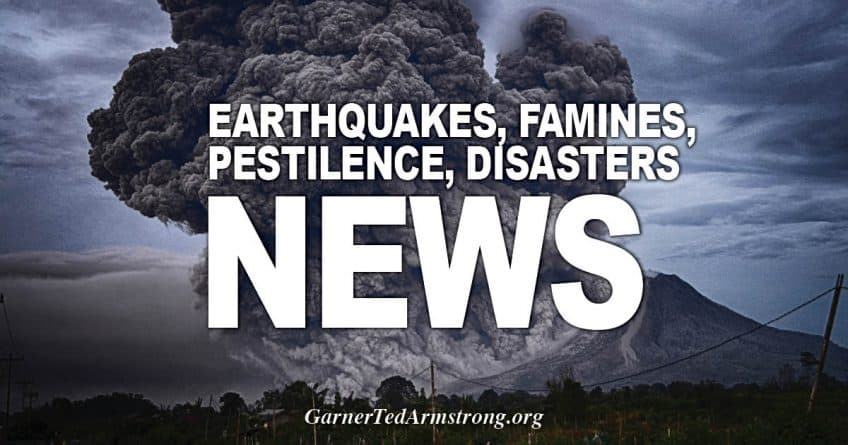Decreasing precipitation and rising populations could bring a perfect storm of water shortages for the United States. Where is our water going?
This content is brought to you by our partner. It does not necessarily reflect the views of National Geographic or its editorial staff.
In March 2019, storm clouds rolled across Oklahoma; rain swept down the gutters of New York; hail pummeled northern Florida; floodwaters forced evacuations in Missouri; and a blizzard brought travel to a stop in South Dakota. Across much of America, it can be easy to assume that we have more than enough water. But that same a month, as storms battered the country, a government-backed report issued a stark warning: America is running out of water.
Within as little as 50 years, many regions of the United States could see their freshwater supply reduced by as much as a third, warn scientists. Of all the freshwater basins that channel rain and snow into the rivers from which we draw the water we rely on for everything from drinking and cooking to washing and cleaning, nearly half may be unable to meet consumers’ monthly demands by 2071. This will mean serious water shortages for Americans.
Shortages won’t affect only the regions we’d expect to be dry: with as many as 96 out of 204 basins in trouble, water shortages would impact most of the U.S., including the central and southern Great Plains, the Southwest, and central Rocky Mountain states, as well as parts of California, the South, and the Midwest. And if 50 years seems like a long way off, the reality is much sooner: shortages could occur in 83 basins as early as 2021. With 40 out of 50 states expecting water shortages, it’s time to start thinking about where our water is going.
From the snow-capped Rockies to the flat expanses of the prairies, and from the wetlands of Florida to the deserts of Arizona, the U.S. is a country of geographical extremes with rainfall patterns to match: Louisiana gets over 60 inches of rainfall a year, while in Nevada, less than 10 inches of rain falls annually in valleys and deserts. But climate change is impacting precipitation. In broad terms, while the wettest regions of the U.S. are getting wetter, the drier areas are getting drier, and there are some seasonal shifts in water patterns—rising temperatures mean the snowmelt that feeds many rivers begins and ends earlier, contributing to summer water shortages. Even where precipitation is projected to increase, mostly in the nation’s northern regions, the trend is toward more intense concentrations of rainfall that are difficult to capture and use. At the same time, 145 basins are expected to be drier, especially in the Southwest, southern Great Plains, and Florida. In the West, California has already faced some of its worst droughts in recorded history.
Along with decreasing rainfall comes rising temperatures. By 2050 the U.S. could be as much as 5.7°F warmer, and extreme weather events, such as heatwaves and drought, could be more intense and occur more frequently. As temperatures warm, evaporation increases, further decreasing water in lakes, reservoirs, and rivers. For example, every degree of warming in the Salt Lake City region could drop the annual water flow of surrounding streams by as much as 6.5 percent—for cities in the western U.S. that rely on cool temperatures to generate snow and rain, warmer weather is bad news.
As the U.S. water supply decreases, demand is set to increase. On average, each American uses 80 to 100 gallons of water every day, with the nation’s estimated total daily usage topping 345 billion gallons—enough to sink the state of Rhode Island under a foot of water. By 2100 the U.S. population will have increased by nearly 200 million, with a total population of some 514 million people. Given that we use water for everything, the simple math is that more people mean more water stress across the country.
And we are already tapping into our reserves. Aquifers, porous rocks and sediment that store vast volumes of water underground, are being drained. Nearly 165 million Americans rely on groundwater for drinking water, farmers use it for irrigation―37 percent of our total water usage is for agriculture—and industry needs it for manufacturing. Groundwater is being pumped faster than it can be naturally replenished. The Central Valley Aquifer in California underlies one of the nation’s most agriculturally productive regions, but it is in drastic decline and has lost about ten cubic miles of water in just four years.
Decreasing supply and increasing demand are creating a perfect water storm, the effects of which are already being felt. The Colorado River carved its way 1,450 miles from the Rockies to the Gulf of California for millions of years, but now no longer reaches the sea. In 2018, parts of the Rio Grande recorded their lowest water levels ever; Arizona essentially lives under permanent drought conditions; and in South Florida’s freshwater aquifers are increasingly susceptible to salt water intrusion due to over-extraction.
With a potential disaster looming, there are doubts about the effectiveness and environmental impacts of traditional responses, including expanding reservoirs and mining more aquifers. New solutions are needed. Desalination plants can produce as much as 50 million gallons of freshwater a day—California has 11 desalination plants, and another 10 are being planned. But despite costs that are half of what they once were, desalinated water is still about twice as expensive as extracted freshwater. Water transfers from wet to dry regions, such as from the Colorado River basin to California, are another expensive option already in use. Proposals have periodically forwarded to pipe water south from Alaska and Canada, but costs and complexity have prevented any further planning or development.
Perhaps the simplest solution is to use less water. Los Angeles has grown by a million people since the 1970s, but water usage is still the same. Water meters and careful pricing help discourage waste, while fixing aging infrastructure will keep more water in the system—a water mains break in the U.S. approximately every two minutes. In the agriculture sector, reducing irrigation by as little as two percent could avert shortages in one-third of the affected basins; farmers could save water by using drip irrigation, soil moisture sensors, and planting more drought-resistant crops. And every American can save more water at home in multiple ways, from taking shorter showers to not rinsing dishes under a running faucet before loading them into a dishwasher, a practice that wastes around 20 gallons of water for each load. These are such small actions, but taken by many, they could amount to the biggest water savings―and we’re going to need every drop.
Source: https://www.nationalgeographic.com/science/article/partner-content-americas-looming-water-crisis
[Disclaimer]










